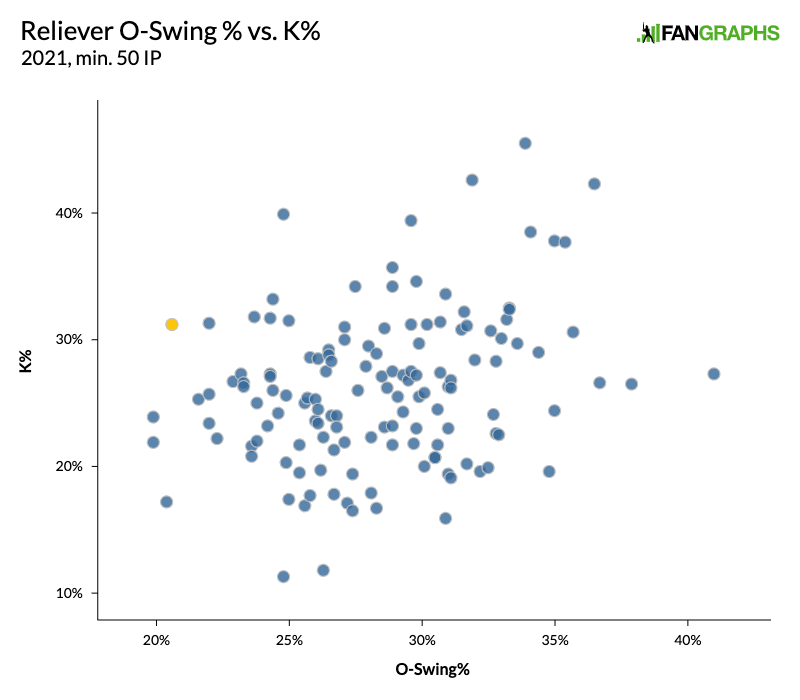An Assortment of Reliever Signings, Part Two

So many relievers have found new homes recently that we’ve written not one, but two reliever roundups! You can find the first one from Luke Hooper here. This is part two, containing four additional relief arms who bring interesting backgrounds, stuff, and deception to the table. Without further ado, let’s get a closer look.
Brewers Sign Brad Boxberger
If you like weird, enigmatic relievers, then Brad Boxberger is the guy for you. He’s reuniting with the Brewers on a one-year, $2.5 million contract and looks to continue his success from last season. Let’s get into what makes Boxberger tick. Here’s a plot containing every reliever in 2021 who threw at least 50 innings. On the x-axis is chase rate, or how often batters swung against a reliever’s out-of-zone pitches. On the y-axis is overall strikeout rate:

That’s right. Boxberger, the point in yellow, generated an above-average strikeout rate for a reliever (31.2%) while having the fourth-lowest chase rate (20.6%). Not that more chases automatically equals more strikeouts, but this is still pleasantly odd. Boxberger doesn’t need to fish outside the zone to rack up strikeouts – he meets hitters in the middle, and more often than not, he emerges victorious. Read the rest of this entry »








